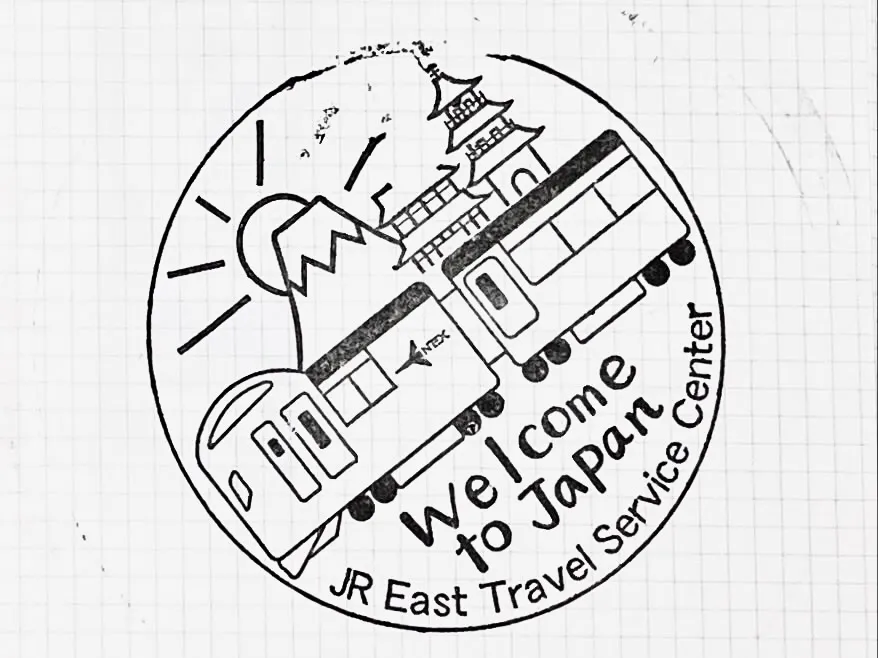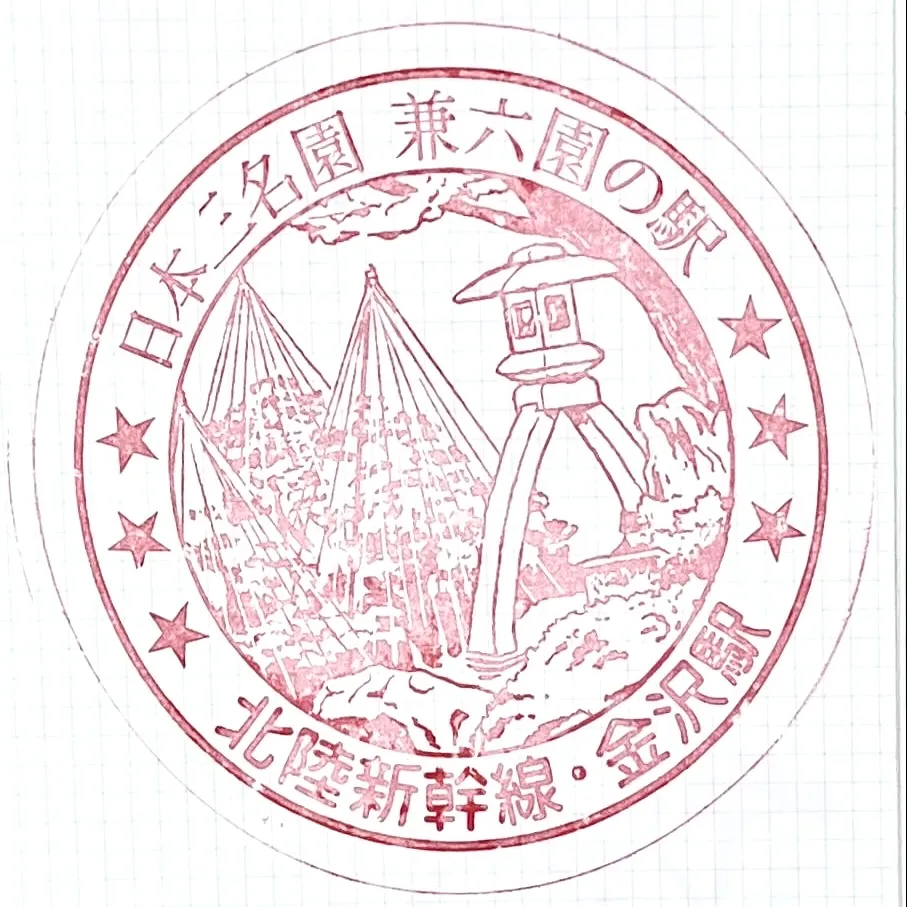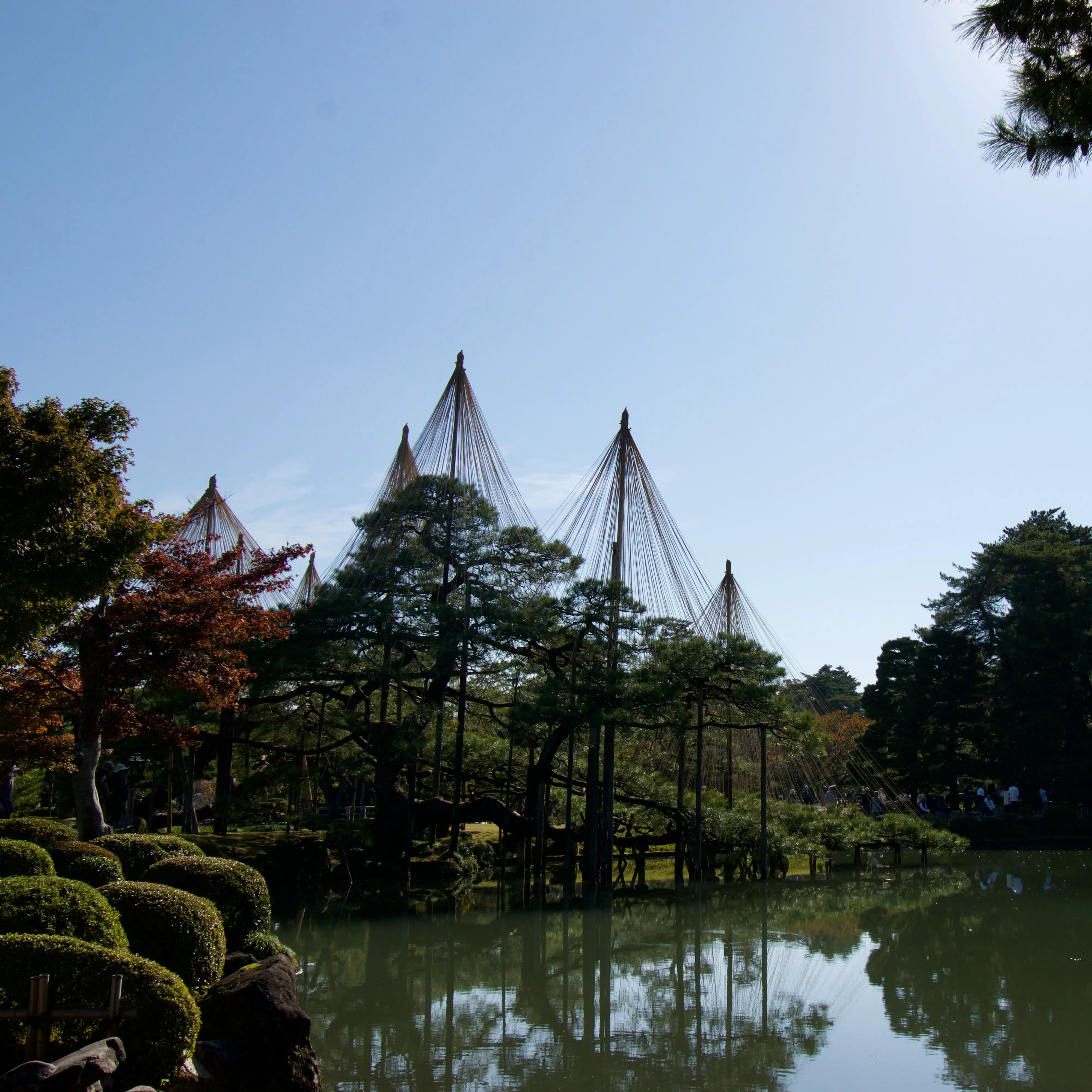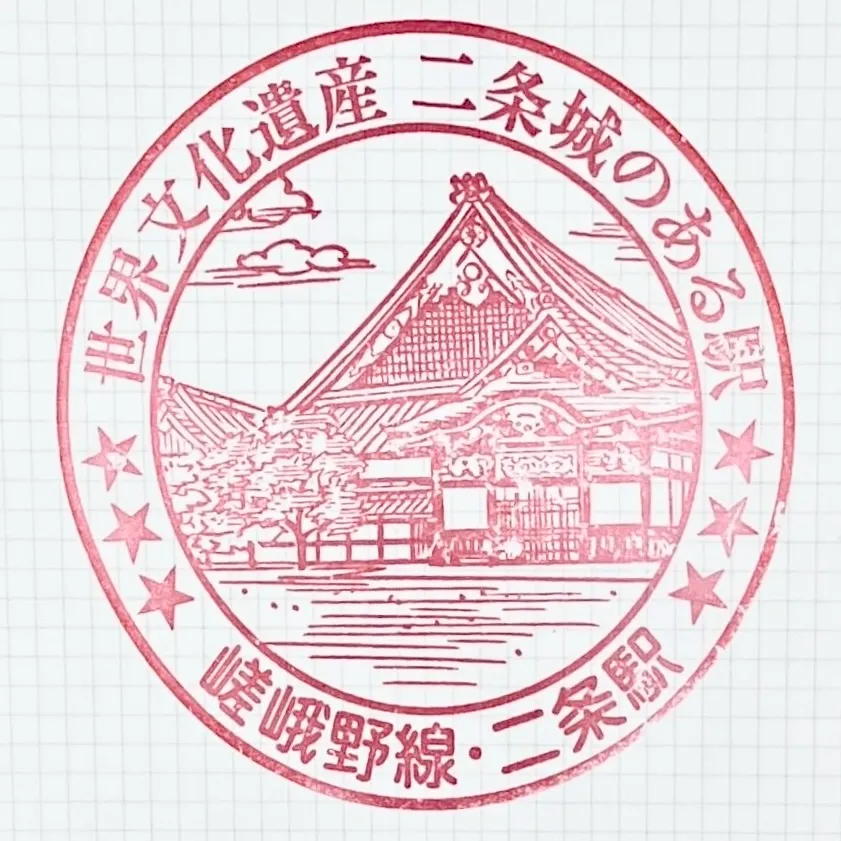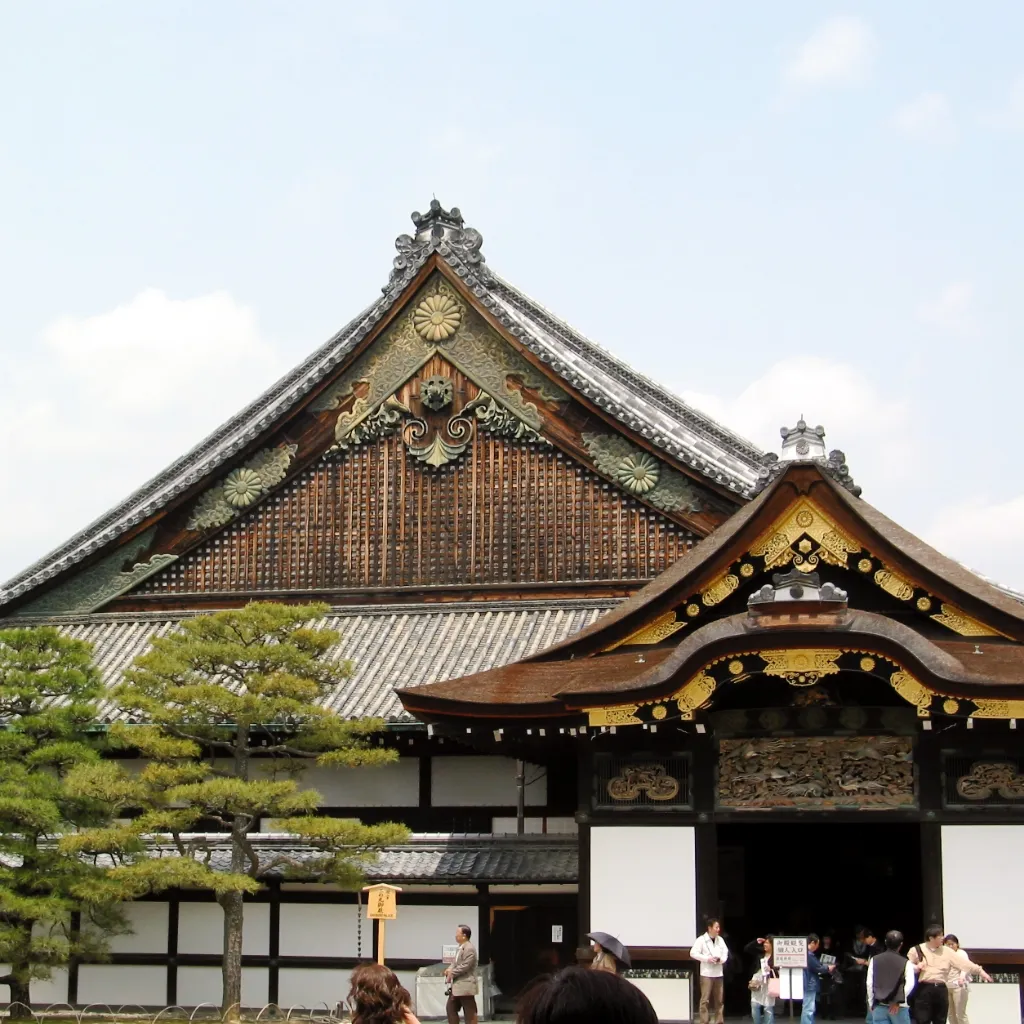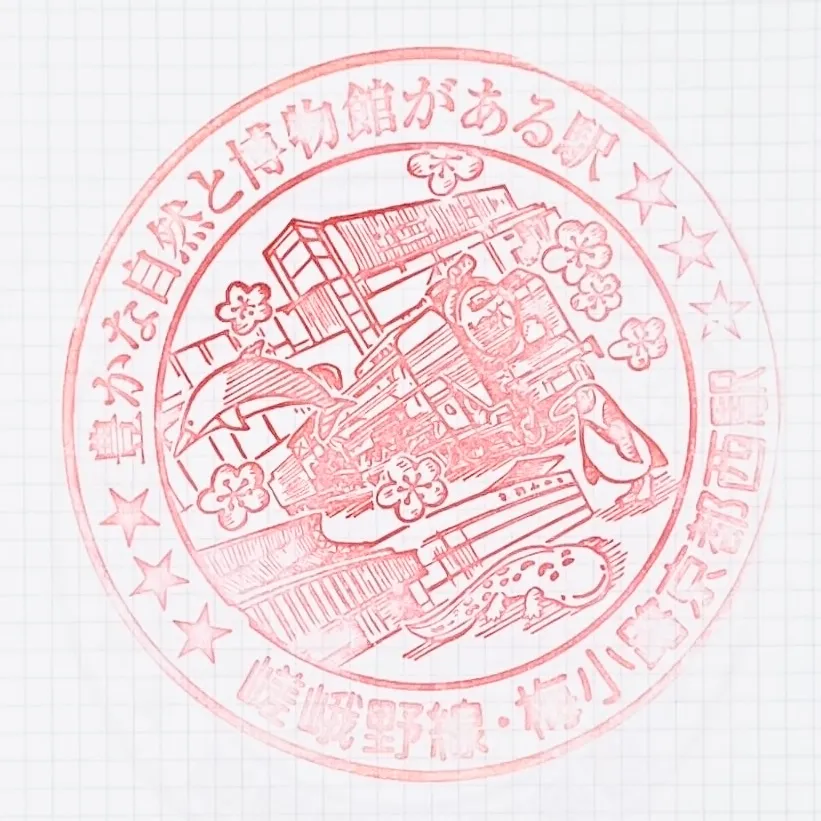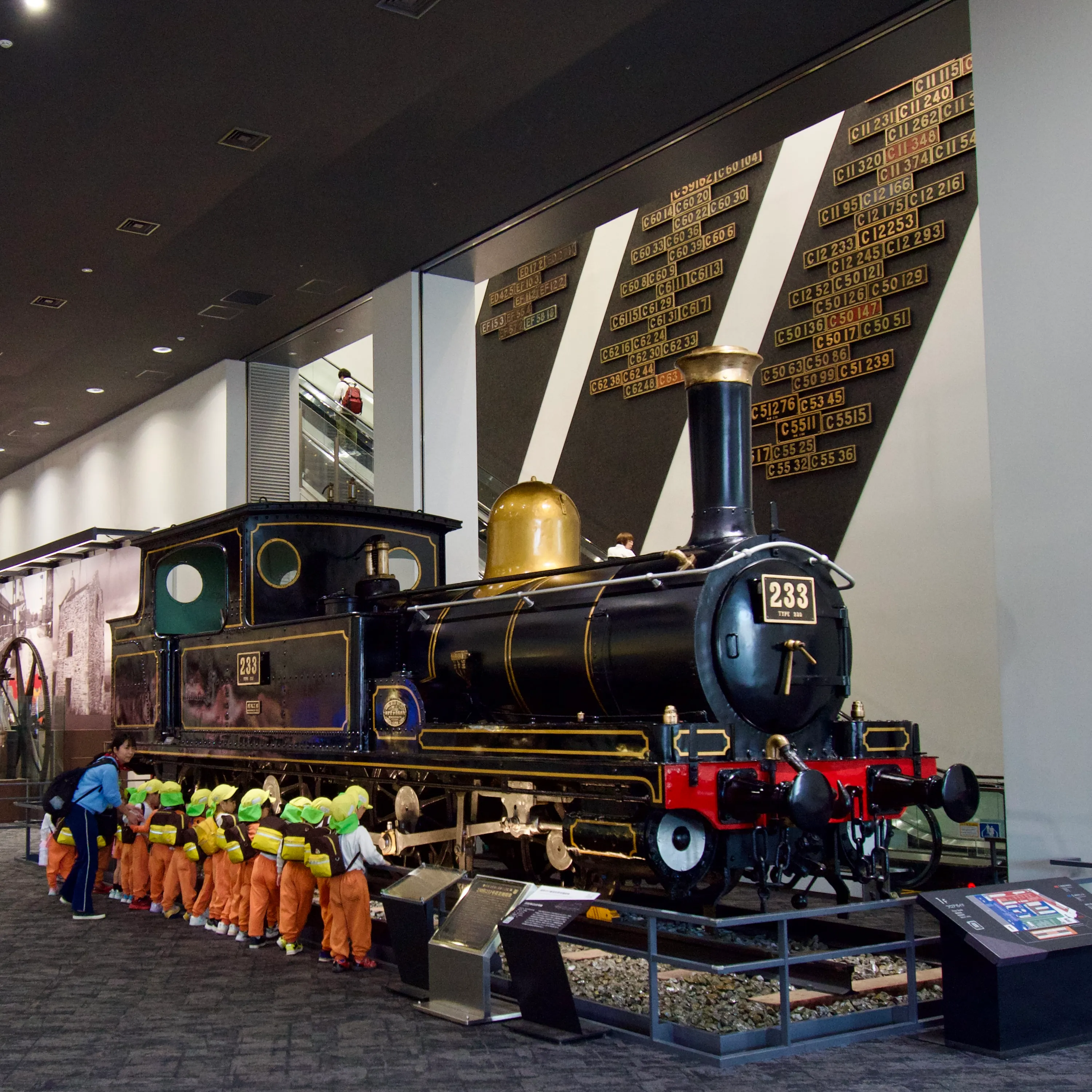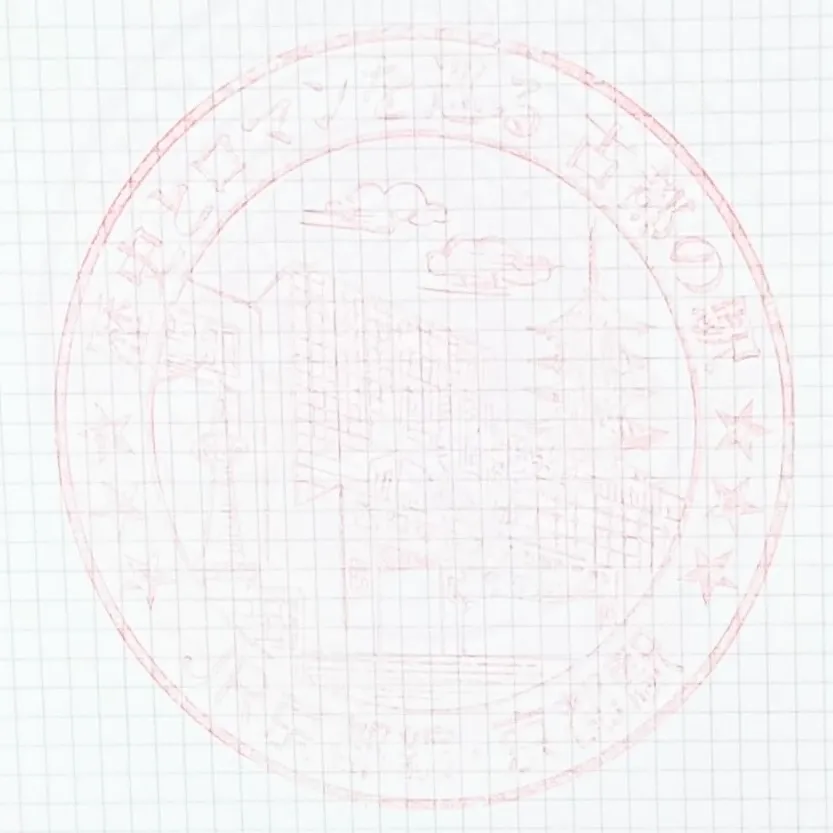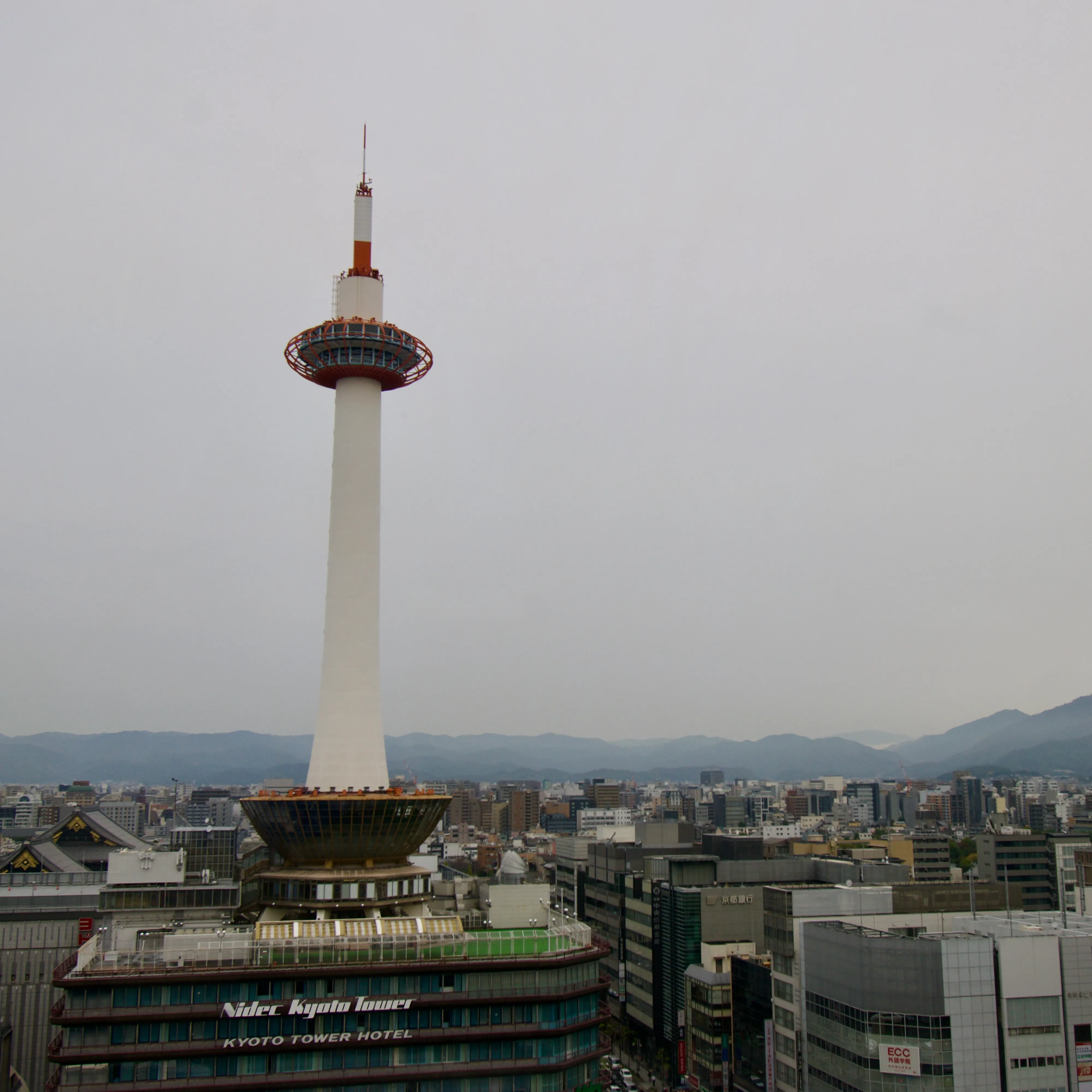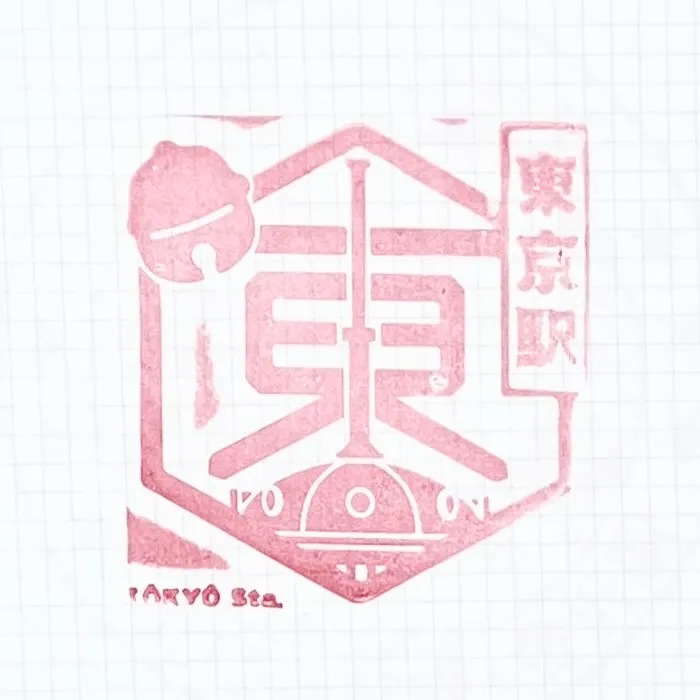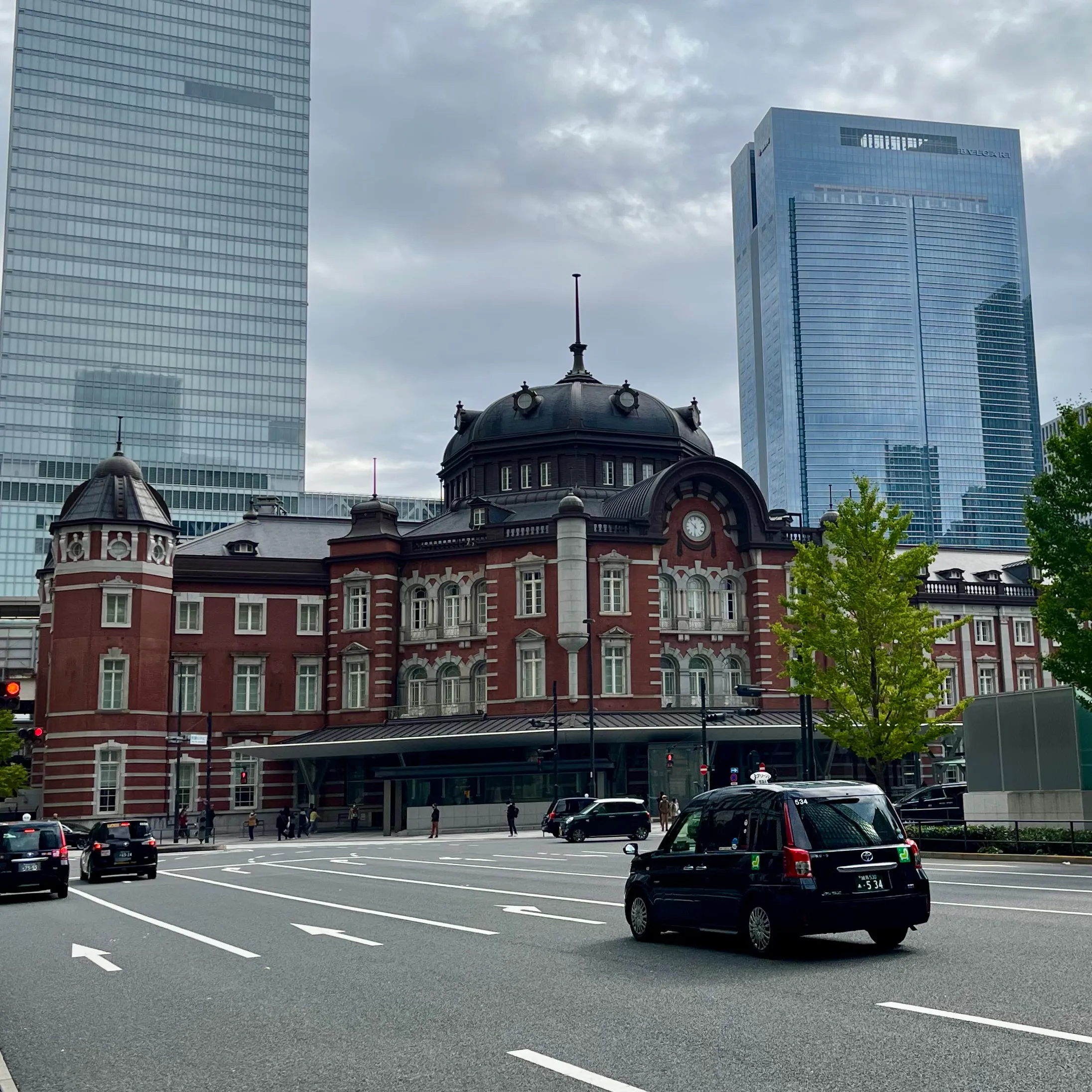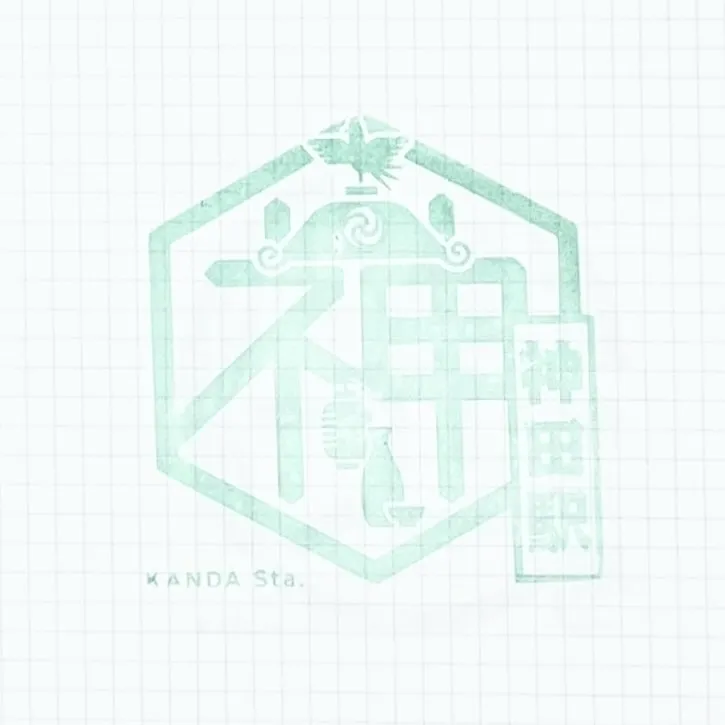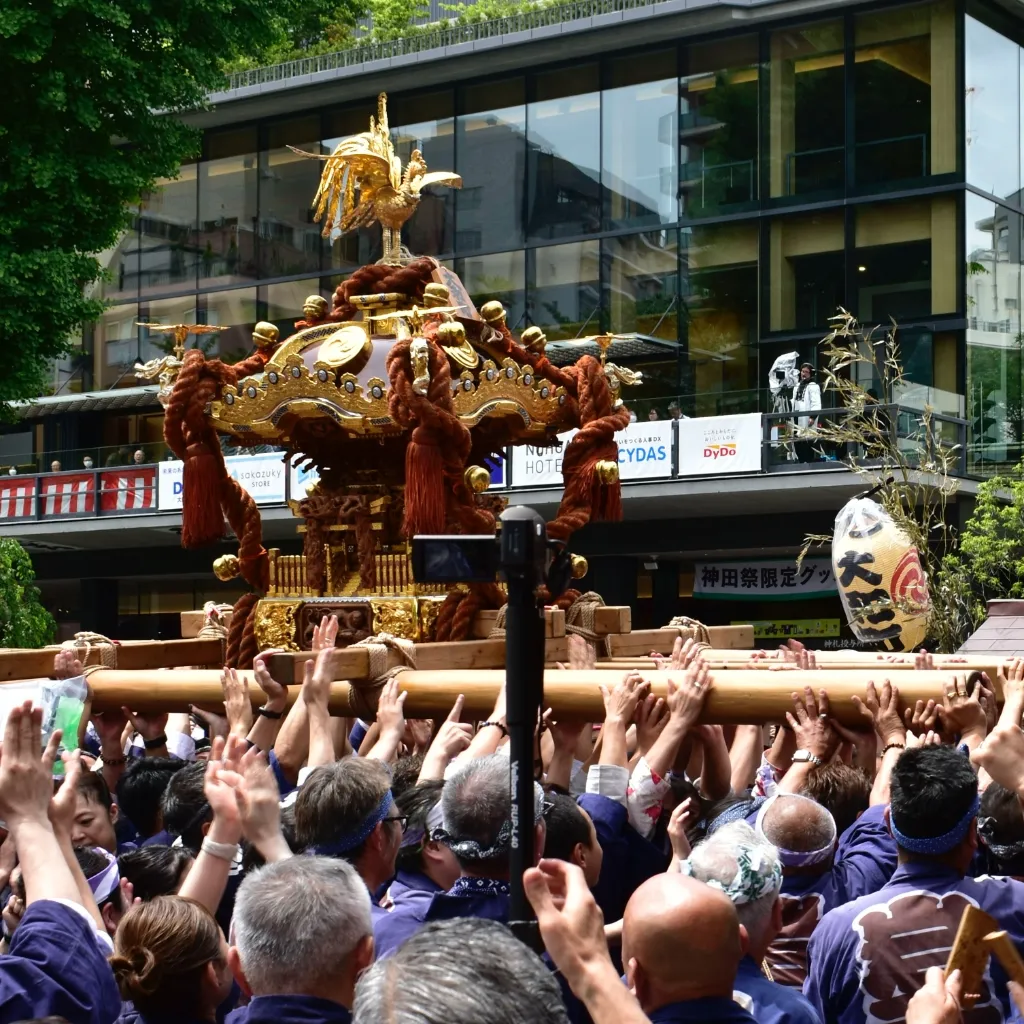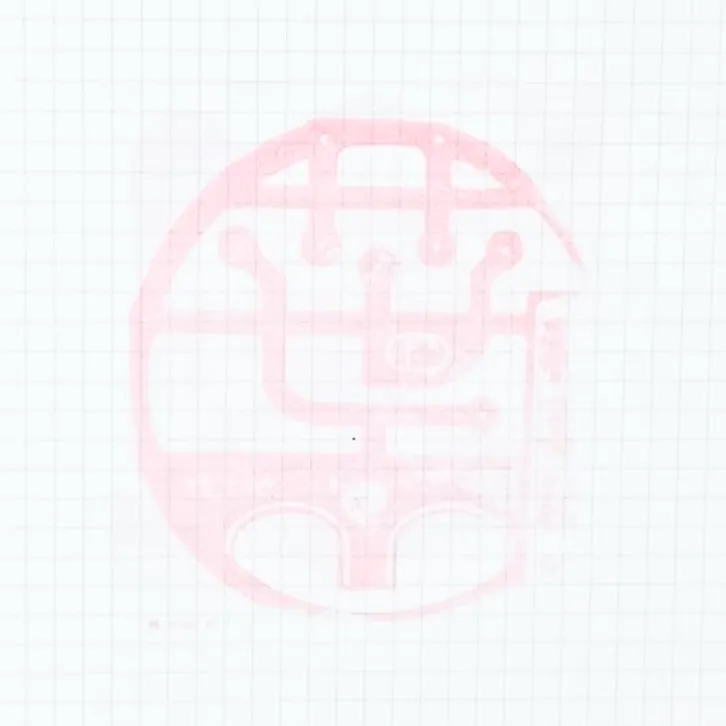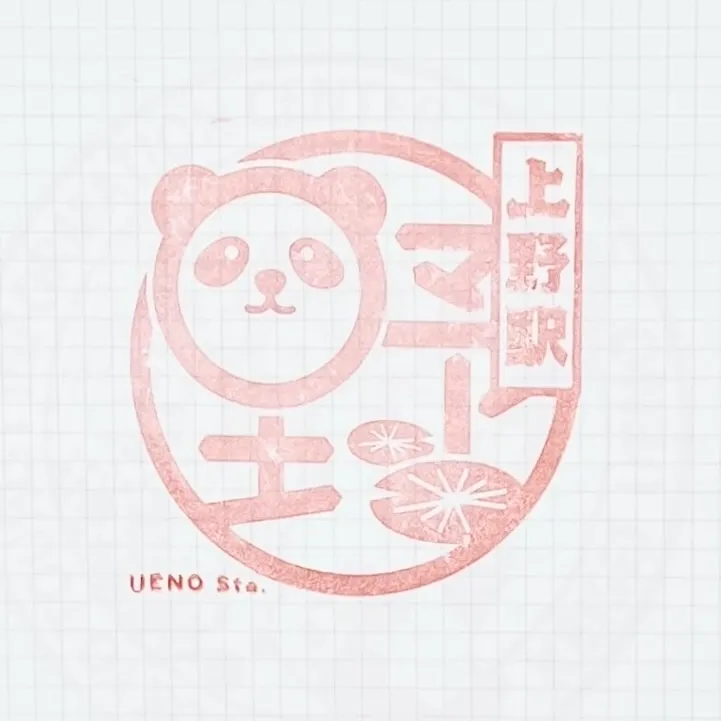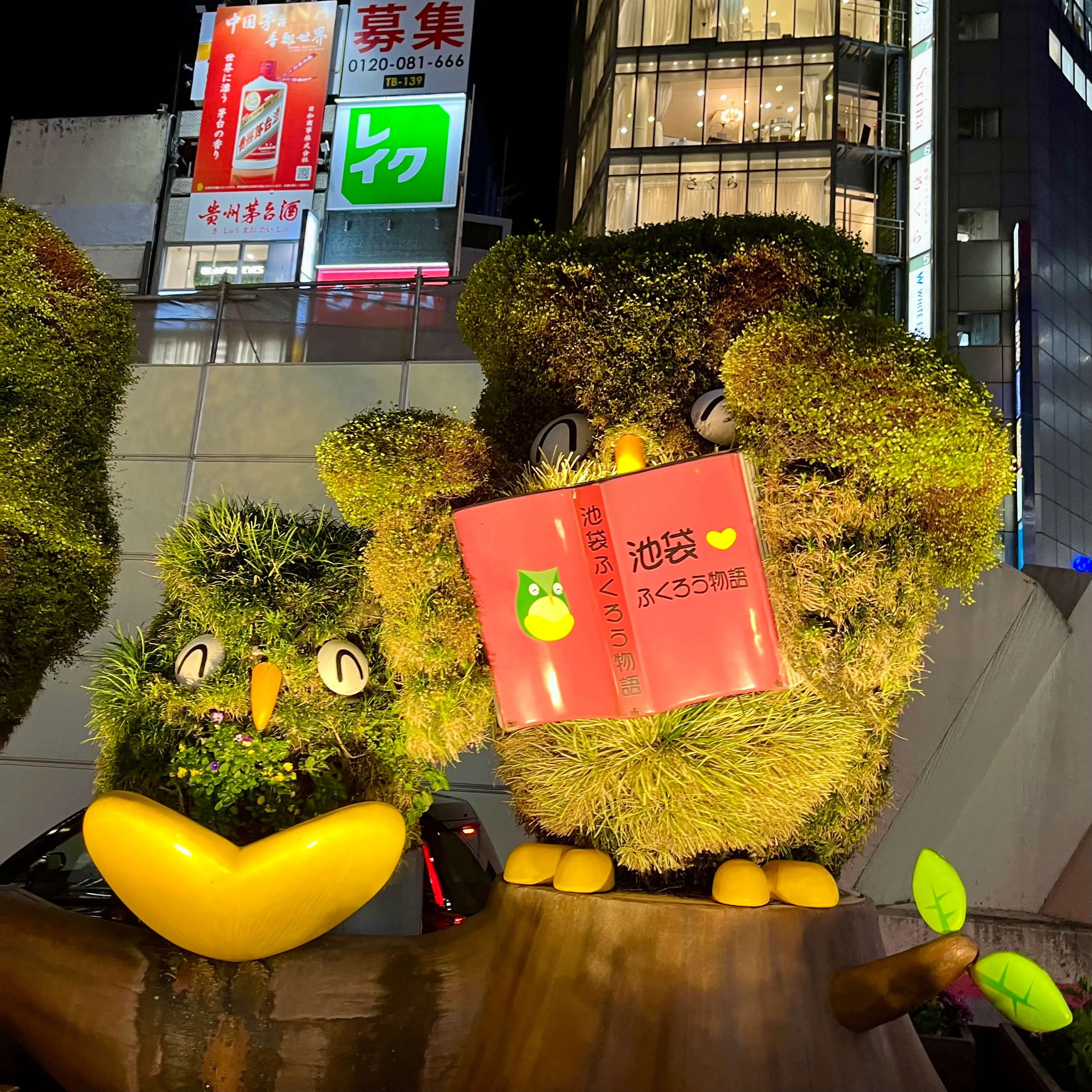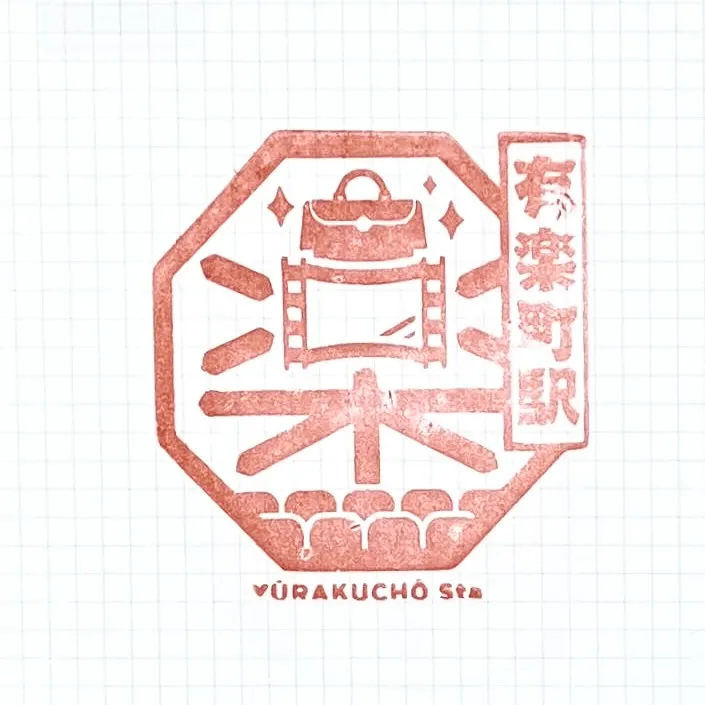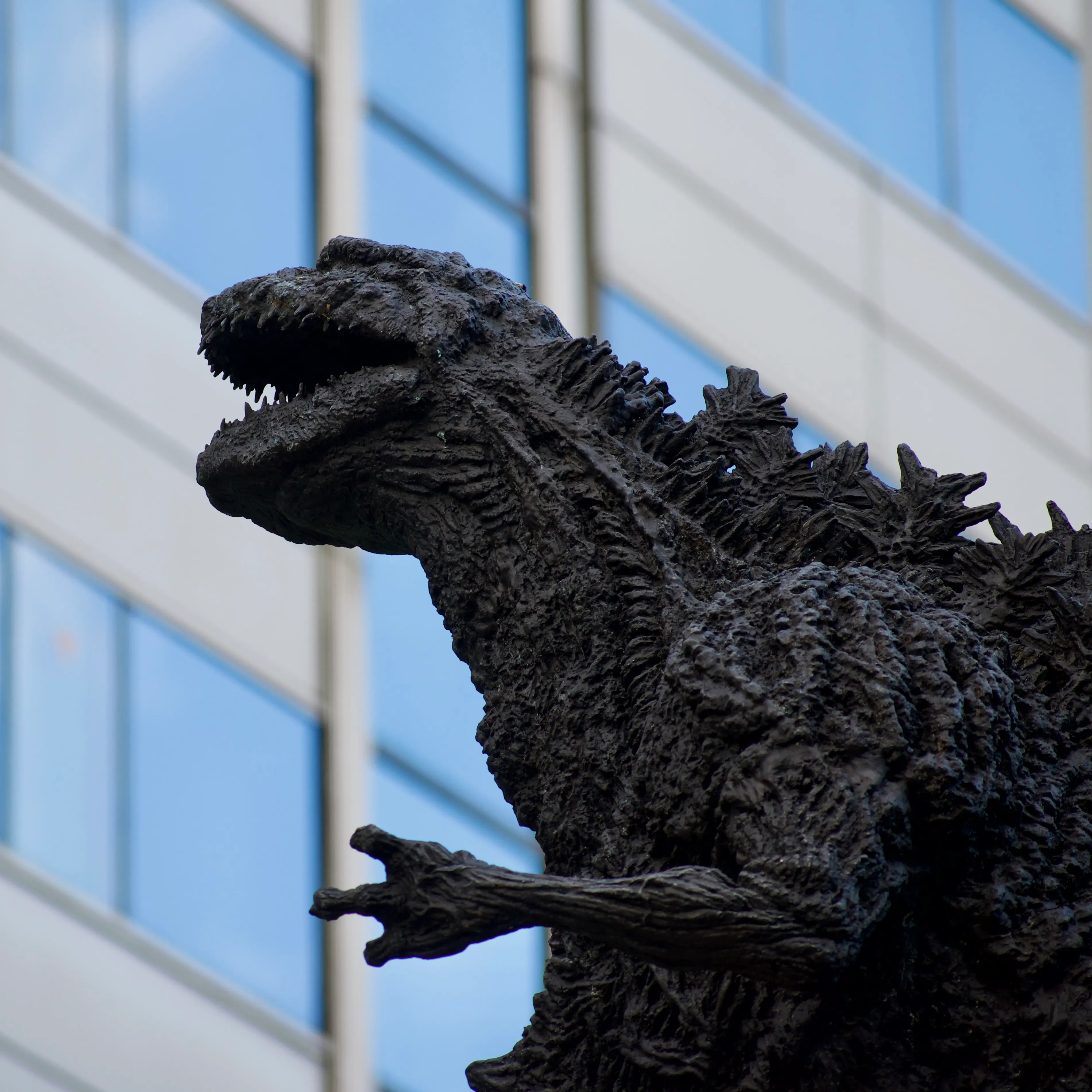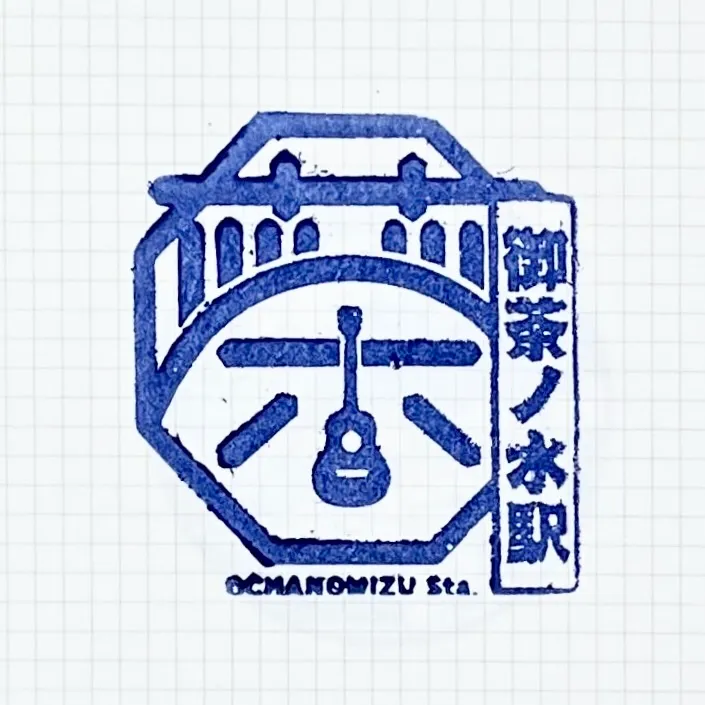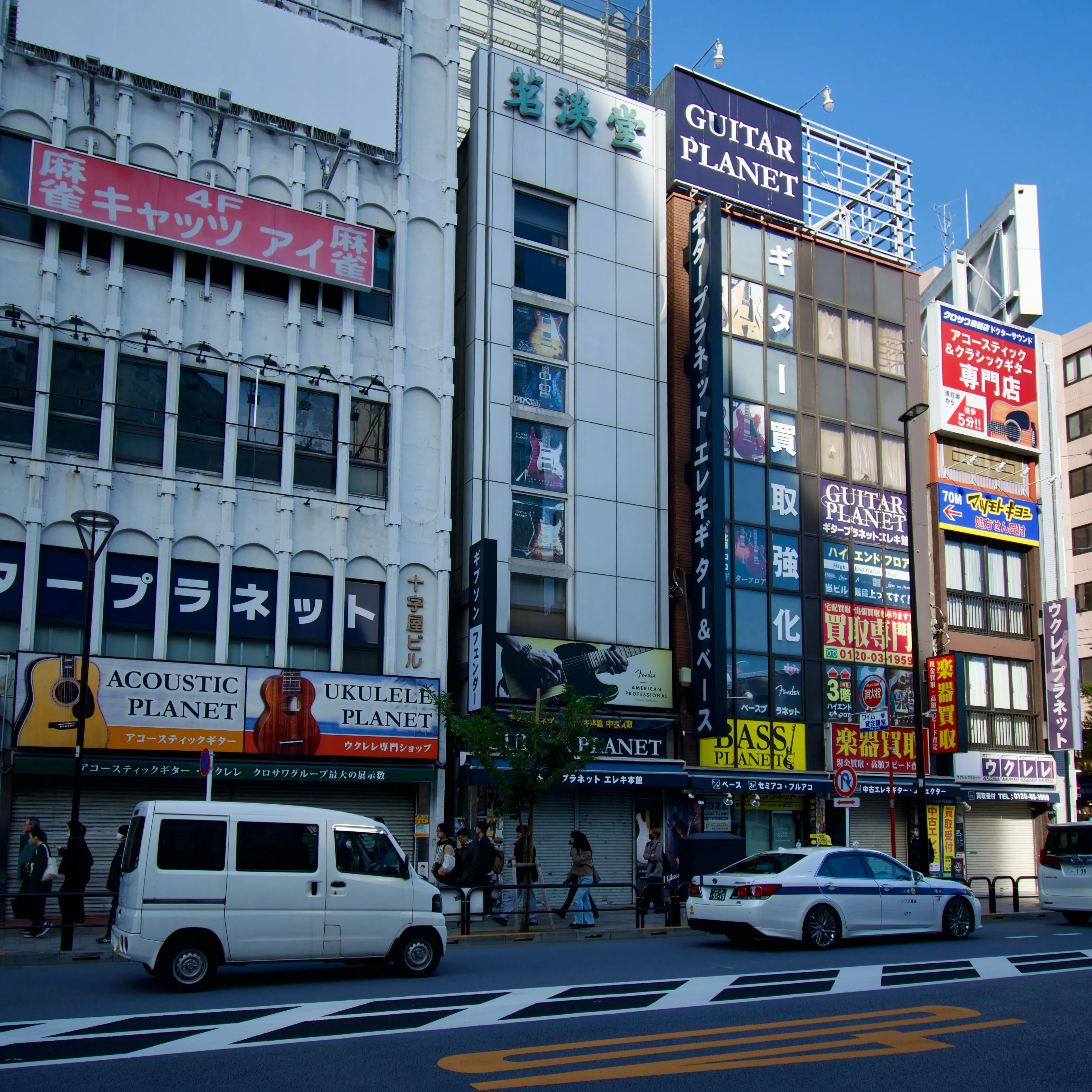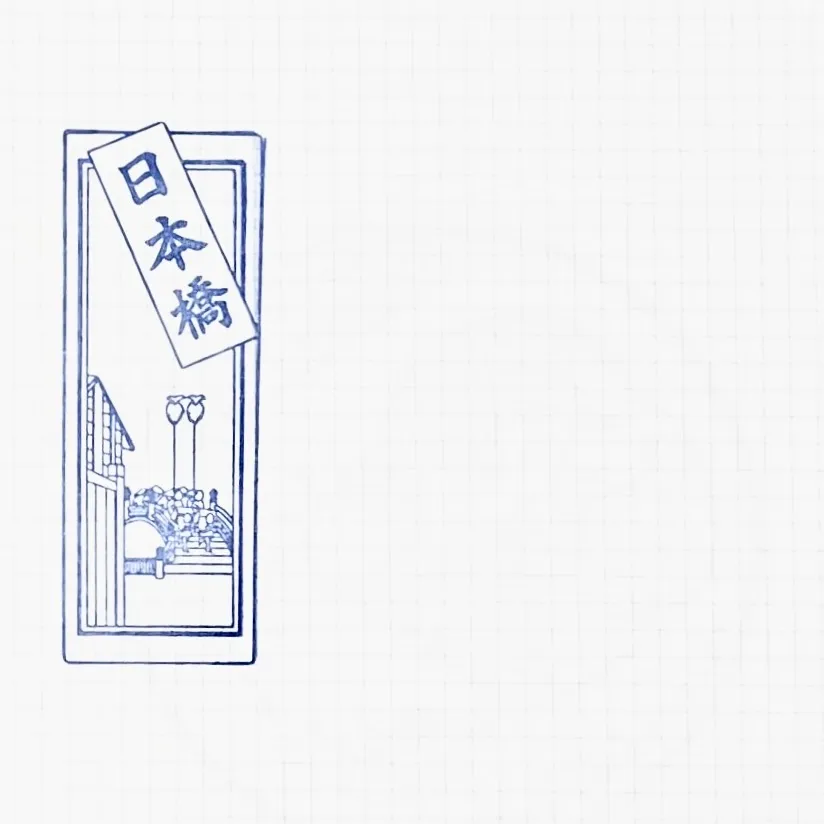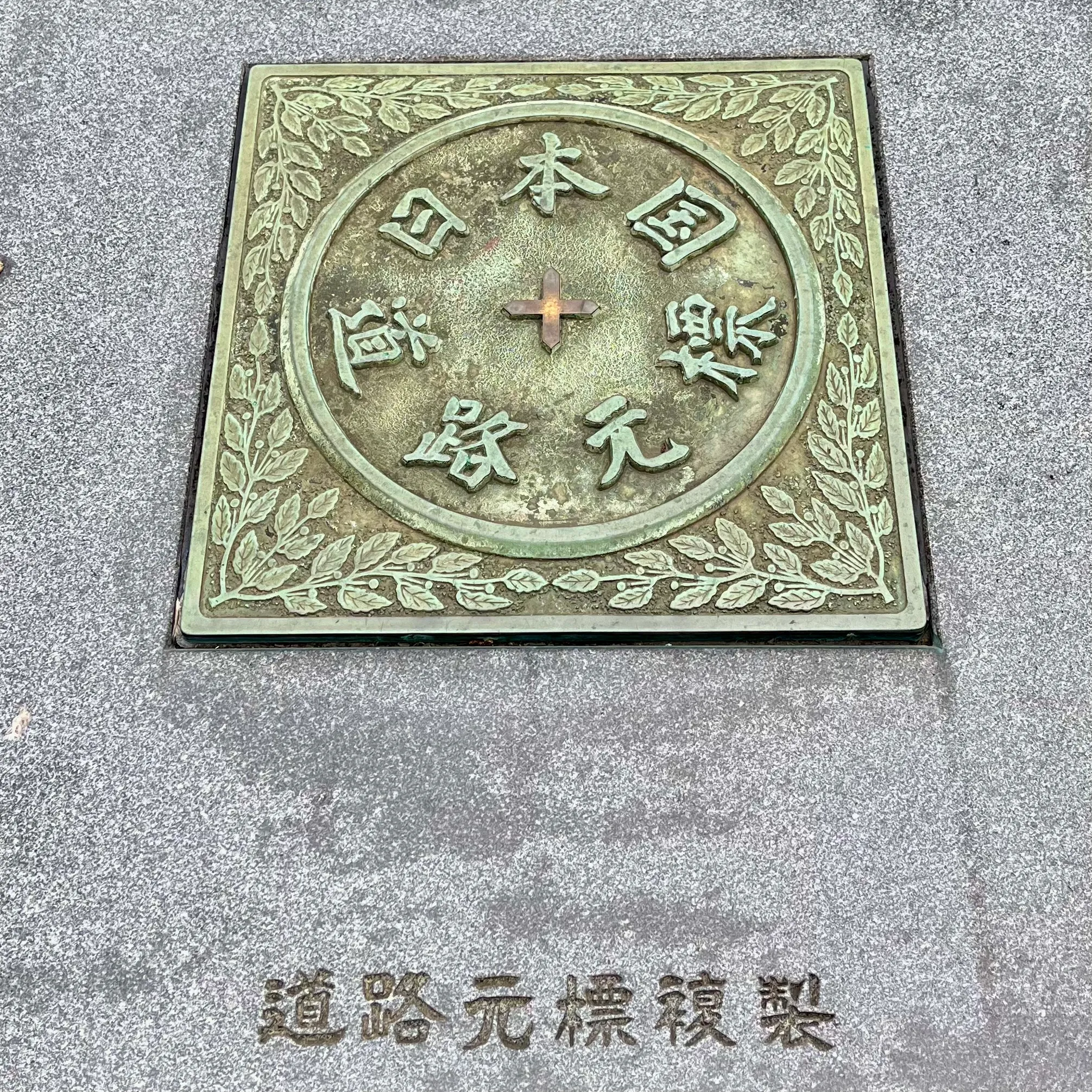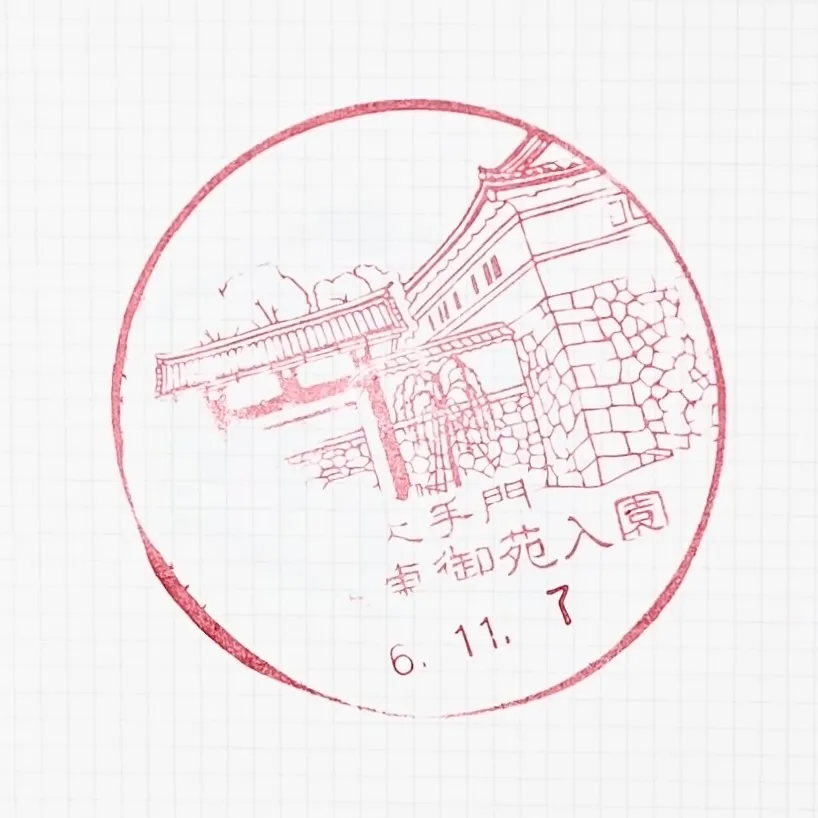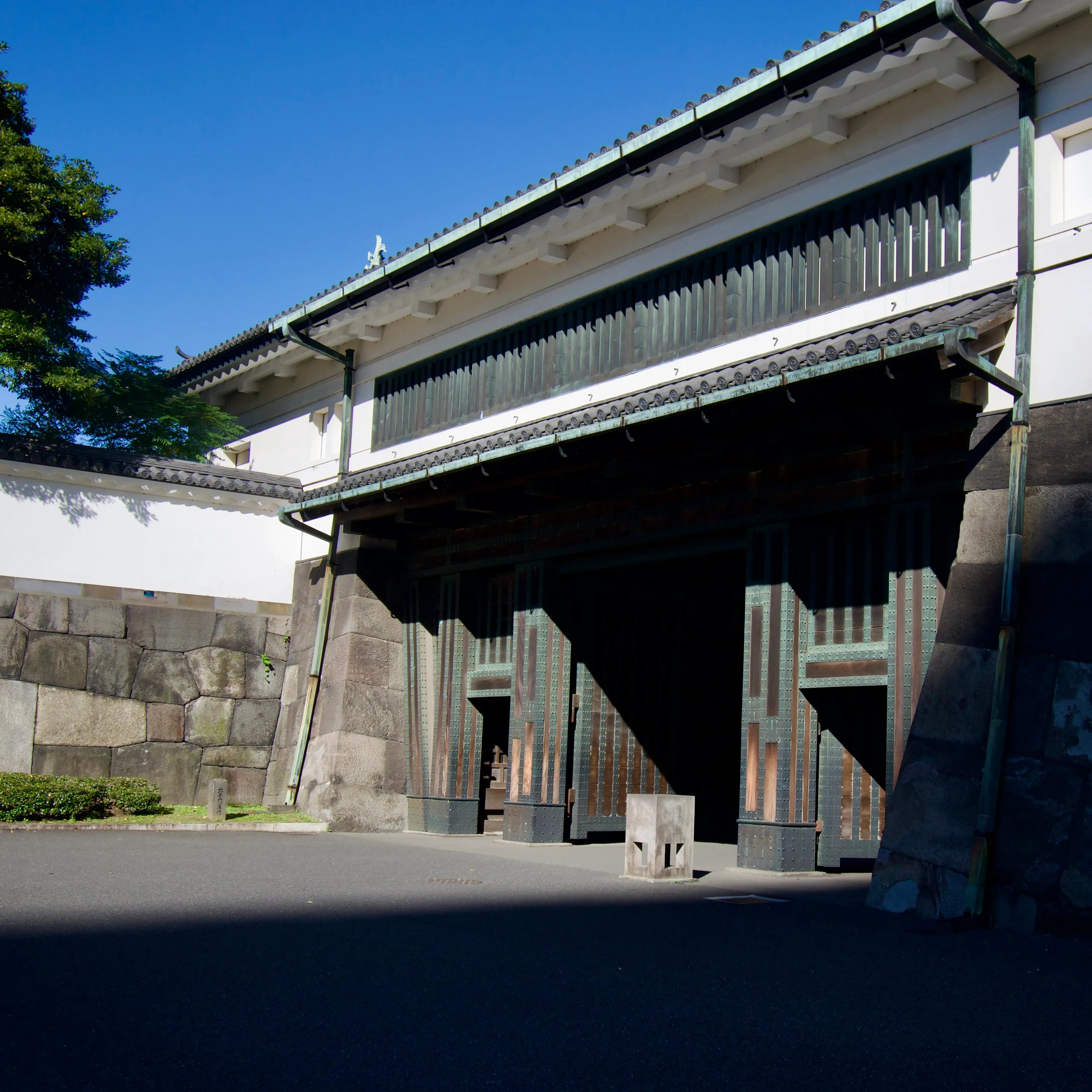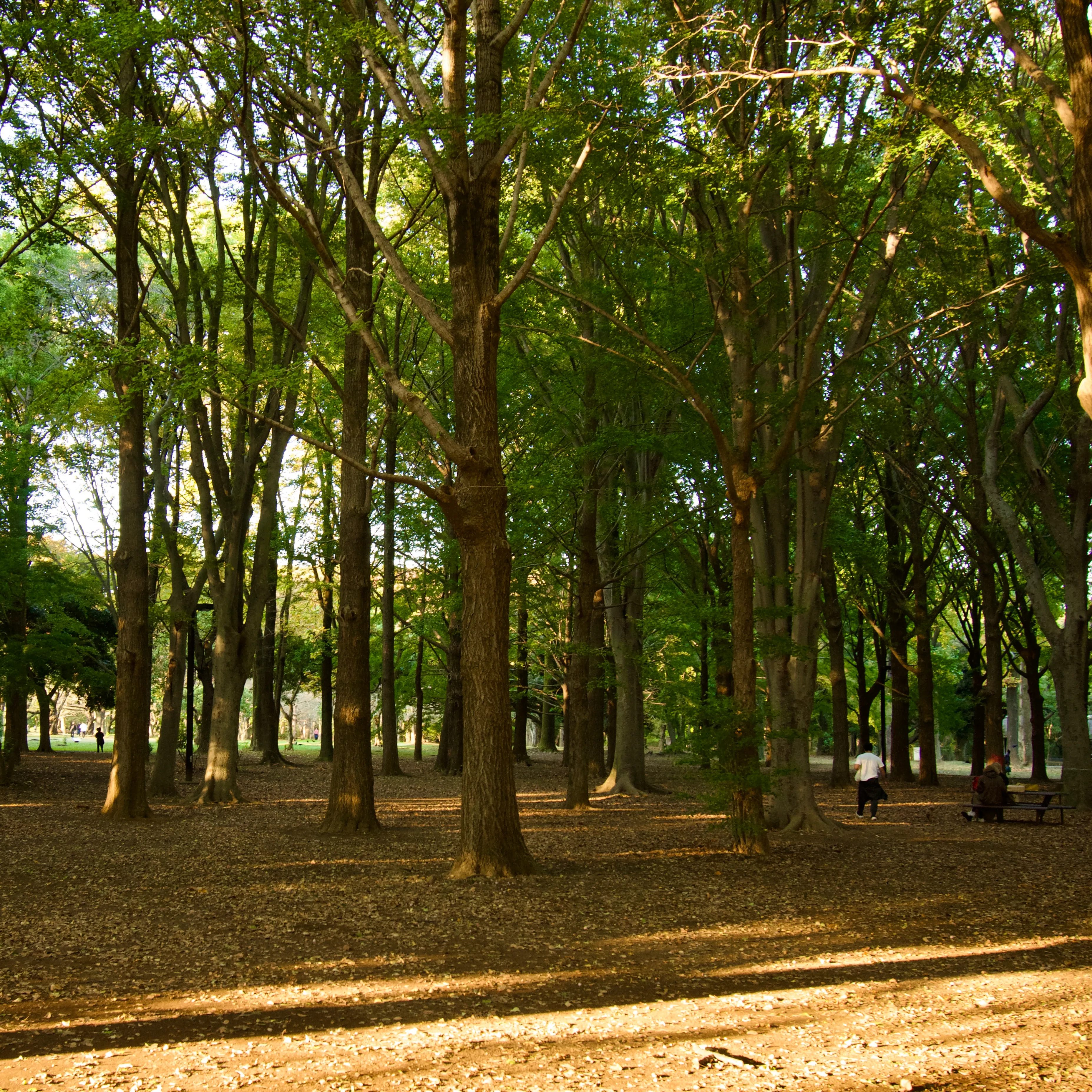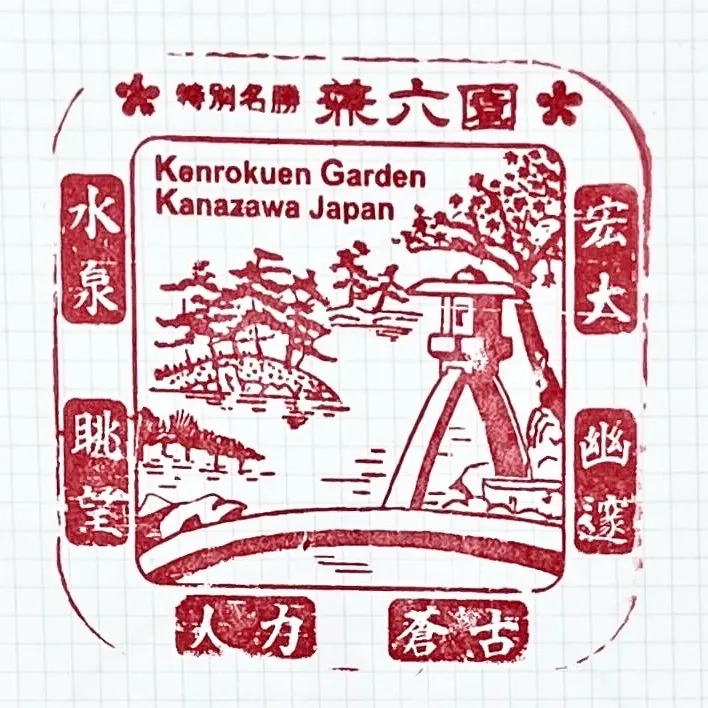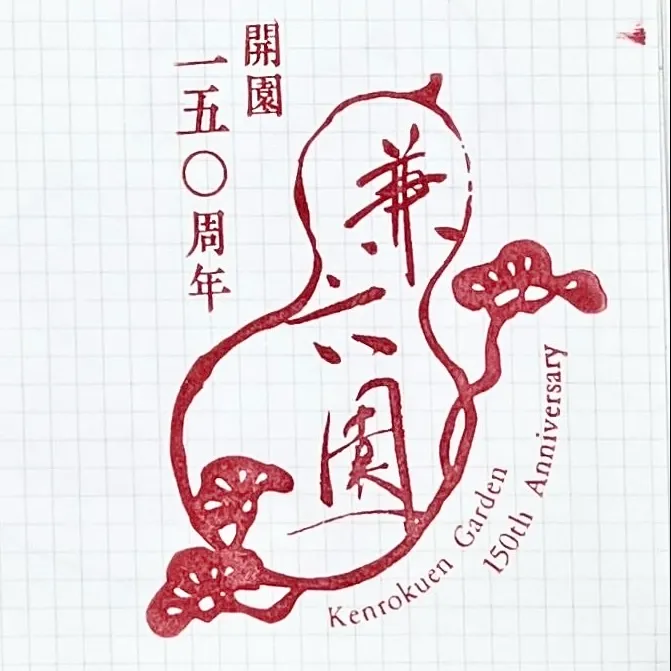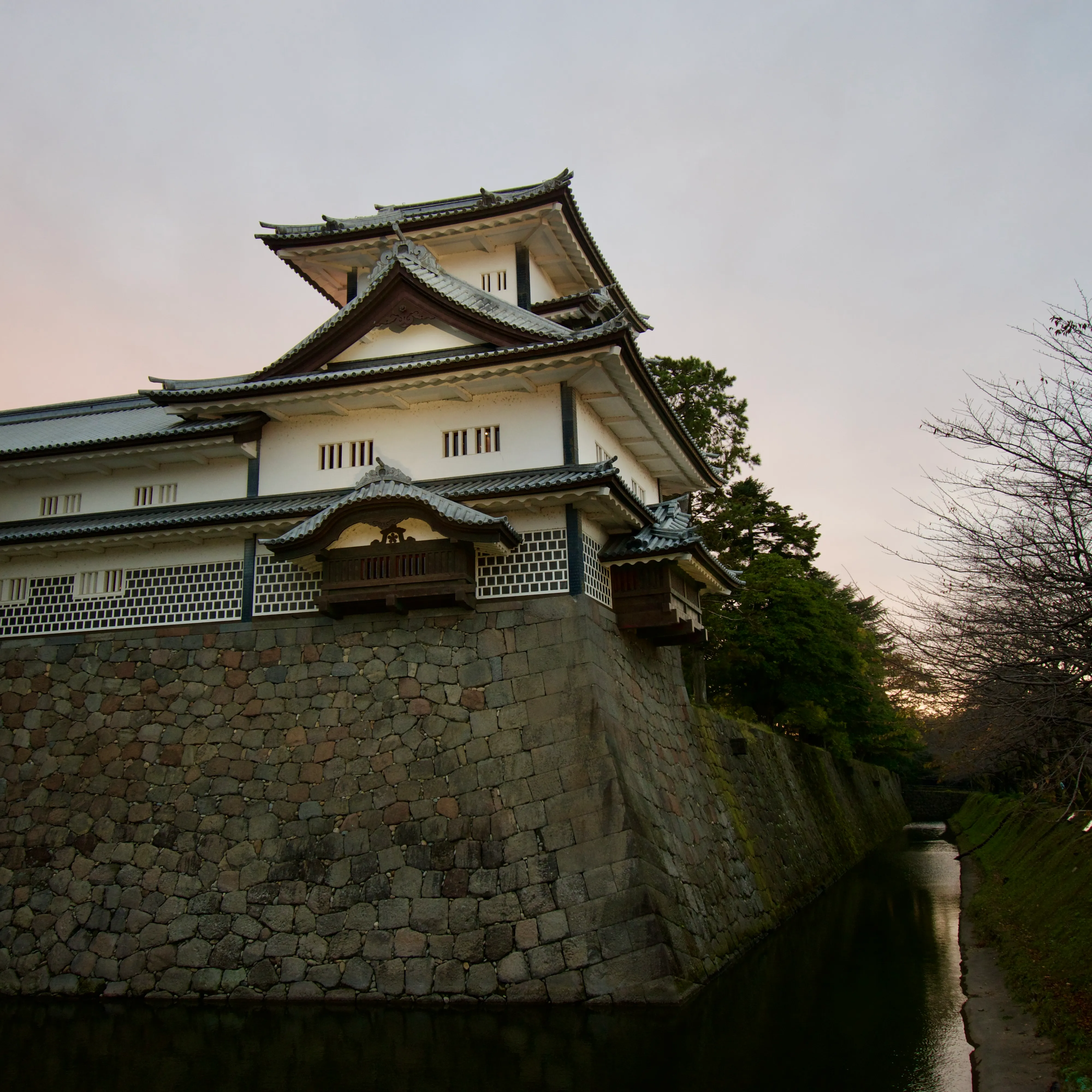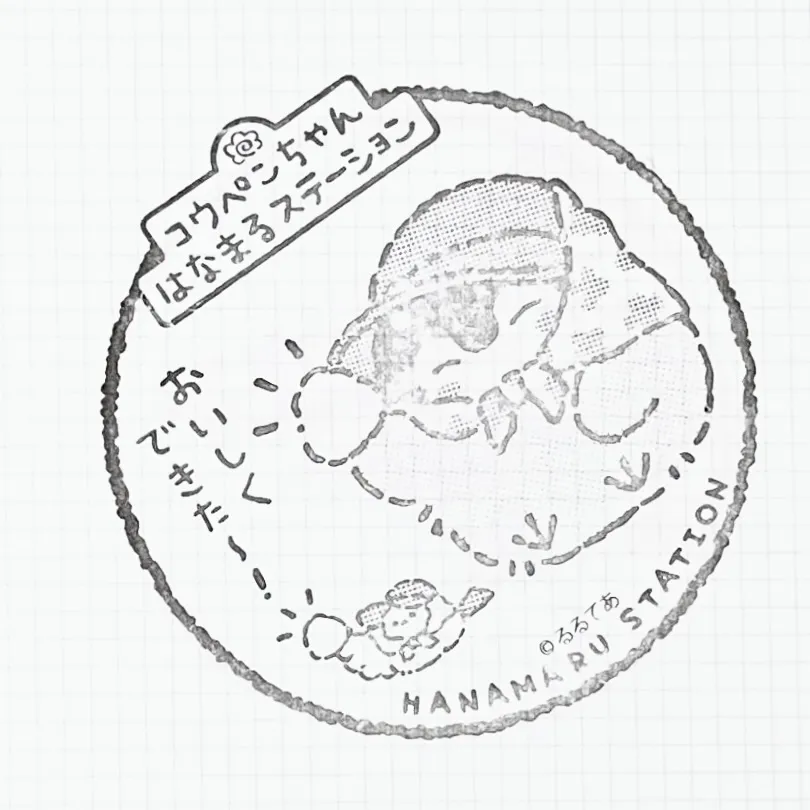While in Japan, I dabbled in the perfect hobby for obsessive-compulsive travellers like myself: stamp collecting!
All over the country, train stations have distinctive rubber stamps (駅スタンプ) for travellers to mark their stampbooks with to commemorate their journey. These really took off in the 1970s1 when Japanese National Railways installed stamps at 1400 stations as part of its DISCOVER JAPAN campaign.
Prior to then, stamps were already offered at a handful of individual stations; enthusiasts had been collecting commemorative postmarks since the late Meiji era (1900s-1910s). An even earlier tradition had temples and shrines award stamps called goshuin (御朱印) as a proof of pilgrimage for their devotees.
With that said, here are the stamps I collected on our recent trip!
JR West stamps
I collected four classic stamps from JR West’s stations in Kanazawa and Kyōto.
The stamp for Kanazawa Station (金沢駅) features the rope-supported trees and stone lantern of Kenrokuen (兼六園).
The stamp for Nijō Station depicts nearby Nijō Castle, although I was just there for a transfer and didn’t go see it. (Photo: Eric Miraglia/BY-NC-SA)
The stamp for Umekōji-Kyōtonishi Station (梅小路京都西駅) combines elements from the Kyōto Aquarium (which I didn’t visit) and the Kyōto Railway Museum (which I definitely did).
The stamp for Kyōto Station (京都駅) has very faint ink from repeated use, but I’m pretty sure it shows the station building, Kyōto Tower (京都タワー), and the Yasaka Pagoda (八坂の塔).
JR East stamps
I absolutely love JR East’s refreshed 2020 stamp designs for its Tōkyō stations. Each incorporates one character of the station’s name with some distinctive feature of the surrounding neighbourhood. I collected six stamps from the Yamanote line (山手線) and one from the Chūō line (中央本線).
The stamp for Tōkyō Station (東京駅) uses the character 東 and depicts the station’s architecture.
The stamp of Kanda Station (神田駅) uses the character 神 and pays tribute to the biannual Kanda Matsuri. (Photo: 江戸村のとくぞう/CC-BY-SA)
The stamp for Akihabara Station (秋葉原駅) takes some liberties with the character 葉 and is designed like a circuit board in honour of Akihabara Electric Town.
The stamp for Ueno Station (上野駅) uses the character 野 and features Ueno Zoo’s panda, a ubiquitous mascot of the neighbourhood.
The stamp for Ikebukuro Station (池袋駅) uses the character 池 and a neighbourhood pun: Ikebukuro rhymes with fukurō (梟), meaning “owl”.
The stamp for Yūrakuchō Station (有楽町駅) uses the character 楽 and celebrates the surrounding shopping district and movie theatres, including the Toho headquarters.
The stamp for Ochanomizu Station (御茶ノ水駅) uses the character 茶 and has a guitar representing the nearly fifty musical instrument stores within walking distance.
Tourist stamps (記念スタンプ)
Train stations aren’t the only places you can get stamps. Tourist information centres at major destinations often have their own stamps for visitors, and even some stores participate in limited-time stamp rallies.
Nihonbashi (日本橋) is a famous bridge often depicted in art and home to Japan’s zero marker.
The Imperial Palace East National Garden (皇居東御苑), unlike the rest of the palace, is open to the public and has a stamp commemorating the date of your visit.
Yoyogi Park (代々木公園) is a quiet oasis in the middle of the big city. The pond and fountains depicted on its stamp were under maintenance when we visited.
If you’re counting, I collected three separate stamps related to Kenrokuen.
Kanazawa Castle (金沢城) is right across the street from Kenrokuen.
The Koupenchan (コウペンちゃん) store on Character Street had a stamp too!
Goshuin
Stamp collecting in Japan is at least informed by, if not directly descended from, the practice of receiving goshuin (御朱印) on a pilgrimage to a temple or shrine. Conversely, goshuin were influenced by the success of stamp collecting: many sects offer them to collectors and other travellers for a small donation, regardless of faith.
I had one goshuin entered into my stampbook at Honnōji (本能寺) in Kyōto.
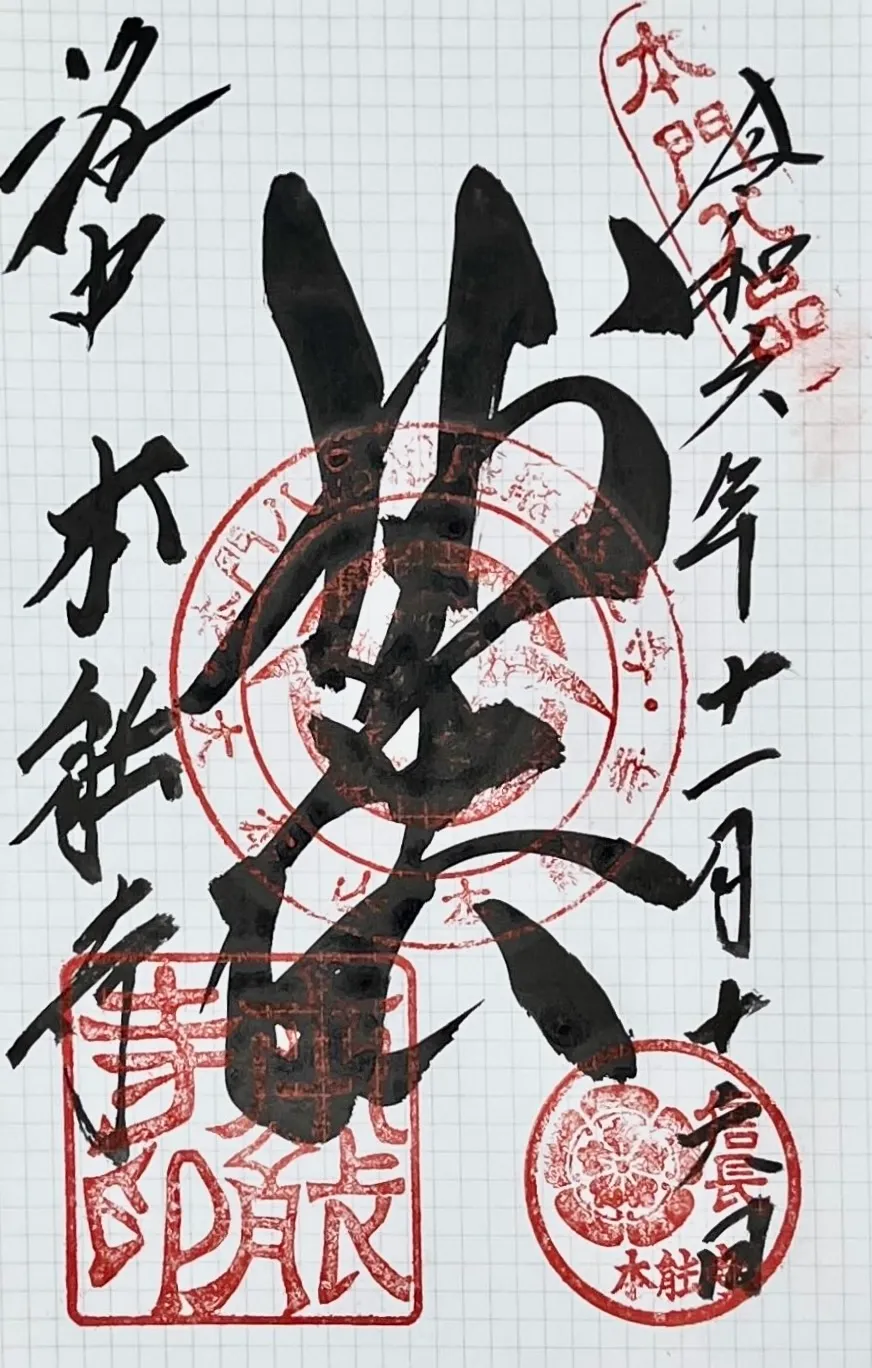
The goshuin commemorating my visit to Honnōji on November 16 of the sixth year of Reiwa.
-
A Kyōto Railway Museum exhibit says the DISCOVER JAPAN stamps were installed in 1965, but I think it means the decade beginning in 1965 (the Shōwa 40s). Other sources confirm that DISCOVER JAPAN campaign kicked off in October 1970.
